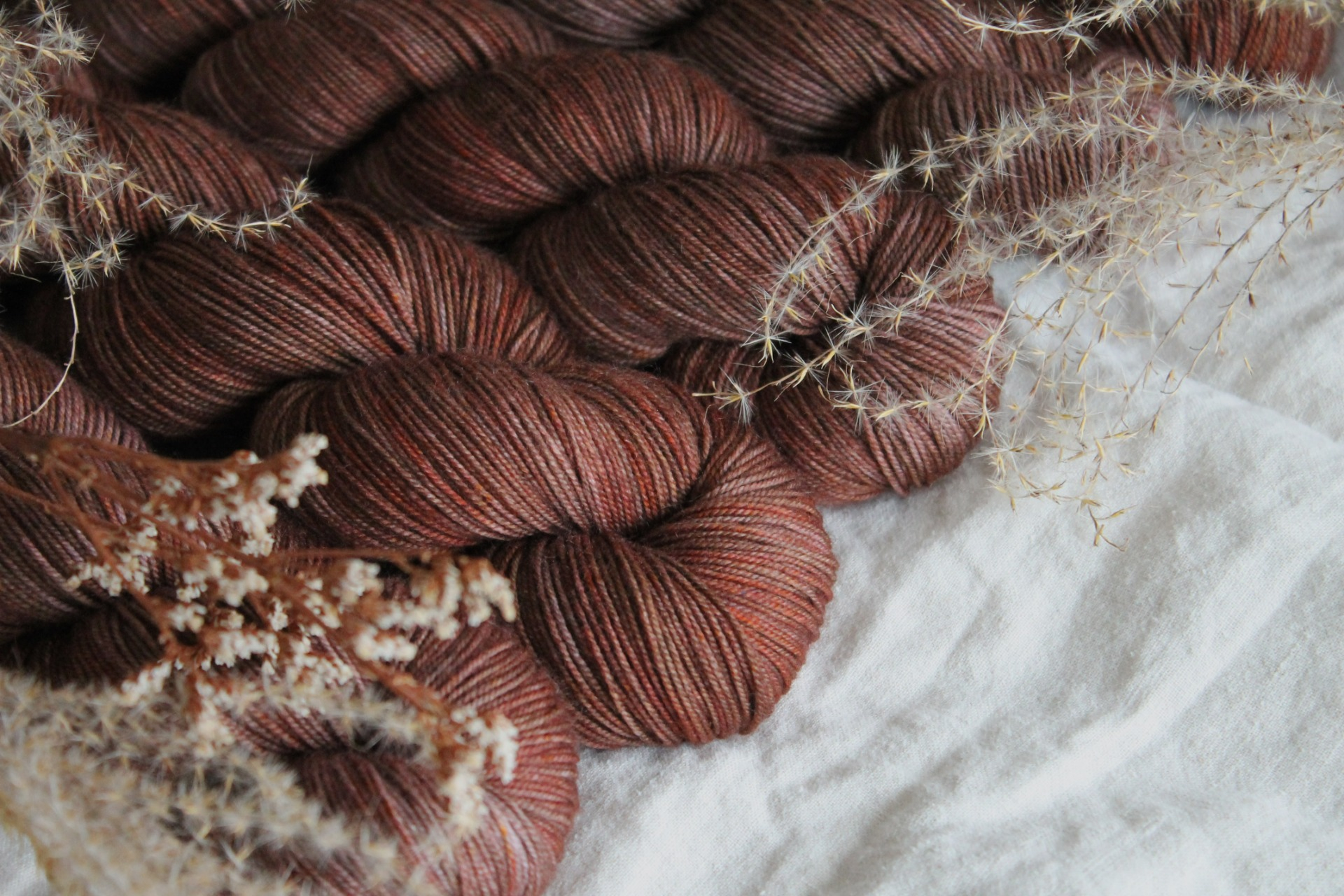
10 Types of Sustainable Yarn and Their Environmental Impacts
We are reader-supported. When you buy through links on our site, we may earn affiliate commission.
Sustainable yarn is made from fibers produced and processed to minimize negative environmental and social impacts. Sustainable yarns may be made from renewable and biodegradable materials such as organic cotton, linen or hemp. The production of sustainable yarn also involves using eco-friendly production methods, such as natural dyes or low-impact processing techniques and ensuring fair and ethical labor practices throughout the supply chain.
Choosing sustainable yarns can help reduce the 1.7 million tons of carbon dioxide produced in the textile industry annually and promote a more sustainable and equitable future. Below are the different types of sustainable yarn and their environmental impacts:
1. Bamboo
Bamboo yarn is made from bamboo fibers, which are renewable and biodegradable. The process of making bamboo yarn is less energy-intensive than the process of making conventional cotton yarn and it requires less water. Bamboo is also naturally antibacterial, making it a good choice for clothing that must be washed frequently.
2. Organic Cotton
Organic cotton yarn is created from cotton that has been grown without the use of synthetic fertilizers, pesticides or genetically modified seeds. This type of yarn is often more expensive than conventional cotton yarn but has a much lower environmental impact. Organic cotton farming consumes less water and reduces soil erosion, positively impacting the local ecosystems. Additionally, the material is not chemically altered to create yarn. The environment will benefit more from manufacturing balls of yarn using fewer chemicals.
3. Recycled
A ball of recycled yarn is derived from fibers reclaimed from post-consumer or post-industrial waste. This type of yarn reduces the waste that goes into landfills and can be made from various materials, including cotton, wool and polyester. Recycled yarn can also be dyed using natural, plant-based dyes, reducing the use of synthetic chemicals.
4. Hemp
Hemp yarn is an eco-friendly resource made from hemp plant fibers, one of the world’s most sustainable crops. This yarn requires very little water and can be grown without pesticides or herbicides. It is also naturally resistant to pests and can be grown without chemical treatments. Hemp yarn is also durable, breathable and antimicrobial, making it a versatile and practical choice for many projects.
5. Linen
Linen yarn is made from the fibers of the flax plant, which is a sustainable crop that requires very little water to grow. This durable yarn can be used for various projects, including clothing and home decor. It is also strong and has a natural luster that gives it a luxurious appearance. Linen yarn is lightweight, making it an excellent choice for summer garments and accessories.
6. Wool
Wool yarn is made from the fleece of sheep, goats and other animals. While wool is a natural and renewable resource, the production of wool can have negative environmental impacts if not appropriately managed. Sustainable wool production involves working grazing lands to maintain soil health and prevent overgrazing.
7. Alpaca
Alpaca yarn is made from the fleece of the alpaca, a domesticated South American animal. It is sustainable because alpacas require very little water and can grow without pesticides or herbicides. It is also hypoallergenic, making it a good choice for people with sensitive skin. Unlike other animal fibers, alpaca is lanolin-free and requires no harsh processing to become yarn. This makes alpaca a fur-based fiber with the lowest environmental impact.
8. Cork
Cork is a renewable and biodegradable resource harvested from the bark of cork oak trees without harming the tree. It is also lightweight, water-resistant and insulating, making it an excellent choice for various projects. Cork yarn requires minimal processing and less energy, making it a low-impact and sustainable option. Its production can help support sustainable forest management practices and preserve biodiversity in cork oak forests.
9. Ahimsa Silk
Ahimsa silk yarn is a sustainable and ethical option for yarn crafting. Also known as peace silk, Ahimsa silk is produced without harming the silkworms. Instead of boiling cocoons to extract the silk fibers, they are left to hatch and manufacturers can collect the silk fibers after the moths have left the cocoons. This process is more time-consuming and requires more labor than traditional silk production, resulting in a more ethical and sustainable product.
10. Tencel
Tencel is a branded form of lyocell fiber made from the wood pulp of eucalyptus trees, a renewable resource. The production of Tencel yarn requires less water and energy than traditional cotton production. The process uses a closed-loop system that recycles up to 99% of the chemicals used in production. Additionally, Tencel yarn is biodegradable and can be composted at the end of its life, making it an environmentally friendly choice.
7 Tips for Using Sustainable Yarn
Using eco-friendly yarn is a great way to reduce your carbon footprint and support a more ethical and sustainable fashion industry. Here are some tips for using sustainable yarn in your projects:
- Choose the suitable fiber: Not all eco-friendly yarns are created equal. Some fibers, like organic cotton, are better suited for specific projects than others. Before you begin your project, research the different types of sustainable yarn available and choose the fiber that will work best for your particular needs.
- Choose sustainable brands: When purchasing yarn, look for certifications such as GOTS (Global Organic Textile Standard) or Fair Trade Certified, which indicate that the brand is committed to social and environmental responsibility.
- Use natural dyes: Conventional dyes can harm the environment, so consider using natural dyes instead. You can make natural dyes from plants, vegetables and insects, producing beautiful, earthy colors perfect for sustainable projects.
- Choose quality over quantity: When choosing your yarn, consider investing in a higher-quality fiber that will stand the test of time rather than opting for a cheaper, lower-quality yarn that you must replace more frequently.
- Repurpose and upcycle: Consider using old clothing or fabric scraps to create a new, sustainable project. This reduces waste and gives new life to items you might have otherwise discarded.
- Consider the entire supply chain: By choosing sustainable yarn that has a lower impact on the environment at every stage of the supply chain, you can make a more meaningful impact on the environment.
- Share your knowledge: Spread the word about the benefits of sustainable yarn and encourage others to make eco-friendly choices.
Choose Sustainable Yarn Clothing
Sustainable yarn is more eco-friendly than conventional yarn, as it reduces synthetic chemicals, conserves water and reduces waste. You can feel good about your clothing choices and their environmental impact by choosing sustainable yarn. Instead of synthetic dyes, which can harm the environment, you can use natural, plant-based dyes. When purchasing sustainable yarn, it is vital to research and choose brands committed to sustainable and ethical practices.
Share on
Like what you read? Join other Environment.co readers!
Get the latest updates on our planet by subscribing to the Environment.co newsletter!
About the author
Grace Waters
Always inspired by the natural world around her, Grace grew up exploring tide pools and hiking mountain trails, developing a deep appreciation for biodiversity and conservation. Now, Grace works as the Senior Editor of Environment.co where she covers topics related to emerging clean technologies, zero-waste initiatives, and the intersection of environmental policy and everyday living.





